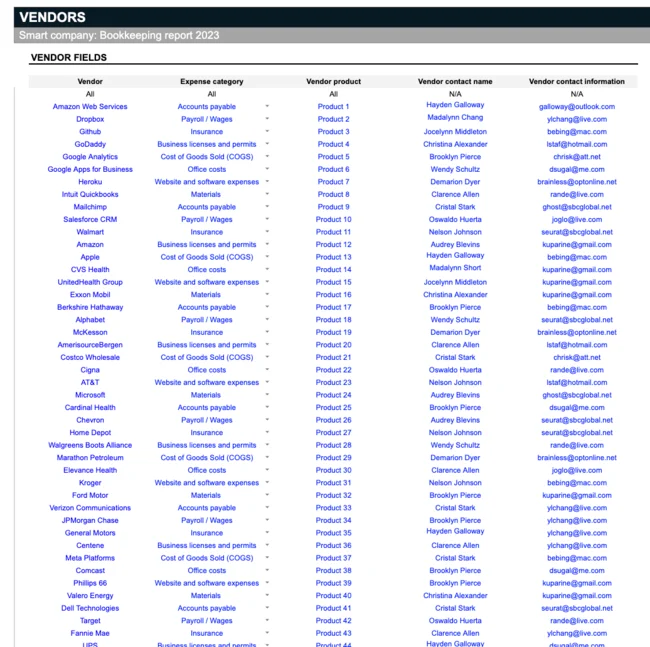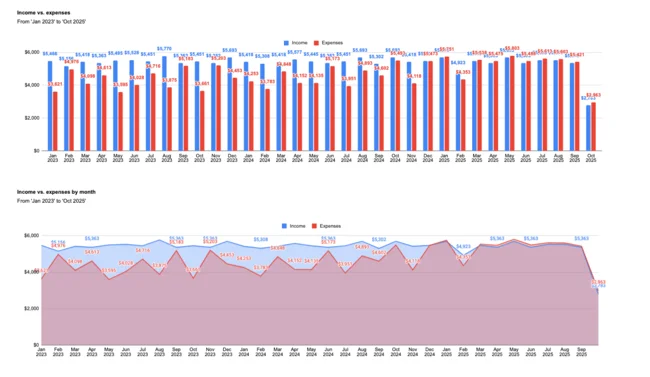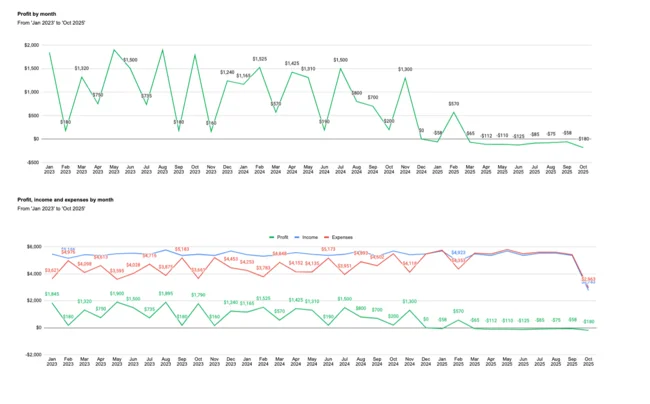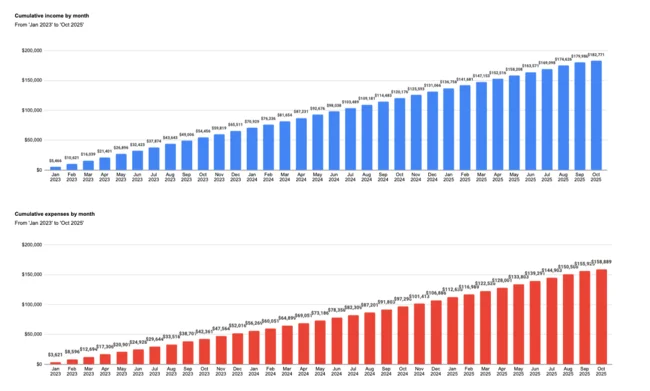
Bookkeeping Dashboard Spreadsheet – Free Template Download
- Techriv
- May 13, 2024
- Entrepreneurship
- 0 Comments
Introduction:
In the fast-paced world of business, effective financial management is crucial for success. That’s why we’ve developed the Bookkeeping Dashboard Spreadsheet, a powerful spreadsheet template designed to revolutionize how you manage your company’s finances. With detailed charts and graphs, customizable fields, and intuitive reporting features, the Bookkeeping Dashboard offers a streamlined solution for tracking income, managing expenses, and analyzing profit trends. Whether you’re a small business owner or a seasoned accountant, this innovative tool empowers you to take control of your financial management with confidence. Join us as we explore the transformative potential of the Bookkeeping Dashboard and unlock new possibilities for financial management excellence.
Download this spreadsheet:
Download Excel Format
Copy Google Sheet
Preview



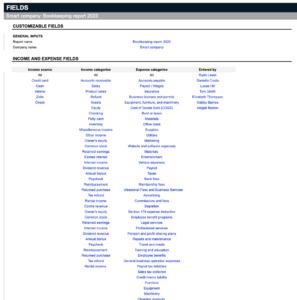



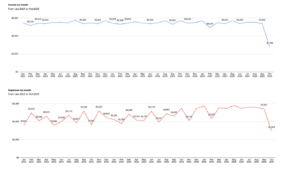


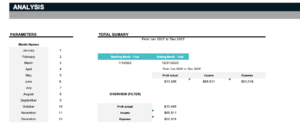

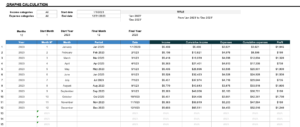

Questions and answers
What are the key benefits of using a bookkeeping dashboard for small businesses?
A bookkeeping dashboard offers several key benefits for small businesses. Firstly, it centralizes all financial data in one place, making it easier to track income… View full answer
How can I customize reports in a bookkeeping dashboard to fit my business needs?
Customizing reports in a bookkeeping dashboard involves several steps to ensure the reports meet your business needs. Start by selecting the data categories you want to include… View full answer
What should I include in the income and expenses sections of a bookkeeping dashboard?
In the income and expenses sections of a bookkeeping dashboard, you should include several key elements to ensure comprehensive tracking. For the income section… View full answer
How do I ensure accuracy when entering data into a bookkeeping dashboard?
Ensuring accuracy when entering data into a bookkeeping dashboard involves several best practices. First, establish a clear and consistent data entry process by defining… View full answer
Can multiple users collaborate on a bookkeeping dashboard, and if so, how?
Yes, multiple users can collaborate on a bookkeeping dashboard, and there are several ways to facilitate this. Most modern spreadsheet tools, including Excel and Google Sheets… View full answer
Download this spreadsheet:
Download Excel Format
Copy Google Sheet
Essential Fields for Organized Bookkeeping
The Bookkeeping Dashboard starts with the Fields tab, a foundational element ensuring systematic and organized data management. Here, users can input vital details such as the company’s name and report title, which propagate throughout the entire spreadsheet, providing consistency across financial records. Additionally, dropdown menus allow for the definition of income sources, income categories, and expense categories, simplifying the categorization process for transactions. This structured approach not only enhances clarity but also streamlines data entry, saving time and reducing the likelihood of errors. By establishing these essential fields, the Bookkeeping Dashboard sets the stage for efficient bookkeeping practices, enabling users to maintain accurate financial records with ease.
Managing Vendor Information Sheet
Effective vendor management is crucial for businesses of all sizes, and the Bookkeeping Dashboard facilitates this process with its dedicated Vendors tab. Here, users can record detailed information about their vendors, including names, categories, products, and contact details. By centralizing vendor data in one accessible location, the dashboard promotes transparency and accountability in financial transactions. Moreover, with insights from industry research informing the inclusion of vendor categories and products, users can tailor their vendor management strategies to suit their specific needs. Whether it’s tracking physical goods suppliers or managing relationships with software service providers, the Vendors tab provides a comprehensive solution for vendor management, ensuring smooth operations and fostering positive business relationships.
Income and Expenses Excel
At the core of effective bookkeeping lies the ability to accurately track income and expenses, and the Bookkeeping Dashboard excels in this regard. The Income and Expense tabs serve as dynamic ledgers, allowing users to record transaction details such as dates, descriptions, categories, vendors, amounts, and taxes. This comprehensive approach to transaction tracking enables users to capture all relevant financial data in a structured format, facilitating real-time monitoring and analysis. Additionally, features such as dropdown menus and editable tax columns enhance flexibility and usability, catering to diverse business needs. Whether it’s recording sales revenue, tracking operational expenses, or calculating tax liabilities, the Bookkeeping Dashboard provides a reliable platform for precise financial record-keeping.
Download this spreadsheet template:
Download Excel Format
Copy Google Sheet
Visualizing Data
A standout feature of the Bookkeeping Dashboard is its robust reporting capabilities, which enable users to visualize financial data with clarity and precision. The Dashboard tab offers a range of dynamic charts and graphs that provide insights into income, expenses, and profit trends over time. From line charts depicting monthly income and expenses to bar charts illustrating cumulative data, the dashboard offers multiple perspectives for analyzing financial performance. Moreover, customizable filters and analysis tools empower users to tailor their reports to specific criteria, uncovering valuable insights that drive informed decision-making. By transforming raw financial data into intuitive visualizations, the Bookkeeping Dashboard facilitates comprehensive reporting, enabling users to gain deeper insights into their financial health and make strategic plans for the future.
Ensuring Accuracy and Accessibility
One of the paramount concerns in financial management is the accuracy of data. With the Bookkeeping Dashboard, ensuring the accuracy of your financial records becomes a seamless process. By defining clear fields for income sources, expense categories, and vendor information, you establish a structured framework for data entry. This structured approach minimizes errors and inconsistencies, laying the foundation for reliable financial reporting.
Moreover, accessibility is key to effective financial management, especially in collaborative settings. The Bookkeeping Dashboard facilitates accessibility by providing a centralized platform for data entry and analysis. Whether you’re a solo entrepreneur or part of a larger team, the dashboard allows multiple users to input data and access reports simultaneously. This accessibility ensures that stakeholders across your organization have real-time visibility into financial performance, fostering informed decision-making and strategic planning.
By prioritizing accuracy and accessibility, the Bookkeeping Dashboard empowers you to maintain transparent and reliable financial records. With streamlined data entry processes and collaborative features, you can trust that your financial information is both accurate and accessible whenever you need it.
Customizable Reporting
Customizable reporting in the Bookkeeping Dashboard allows users to tailor financial reports to their specific needs and preferences. This feature enables businesses to generate reports focused on analyzing income streams, tracking expenses, or assessing profitability over different time periods. Users can apply filters to refine the data included in the report and choose from various visualization options to present financial data clearly. Customizable reporting empowers users to extract valuable insights from their financial data and communicate findings effectively to stakeholders, facilitating better decision-making.
Bookkeeping Dashboard Template
The customizable reporting template in the Bookkeeping Dashboard allows users to tailor financial reports to their specific needs. With customizable features and a variety of visualization options, users can create professional reports quickly and easily. This flexibility streamlines the reporting process and ensures that stakeholders receive relevant and actionable insights.
Key Aspects of Bookkeeping Dashboard Excel
-
User-friendly interface: The Bookkeeping Dashboard Spreadsheet offers a simple and intuitive interface, making it easy for users to navigate and input data without extensive training or technical expertise.
-
Comprehensive data organization: With defined fields for income, expenses, vendors, and other financial information, the spreadsheet ensures that all relevant data is organized and readily accessible for analysis.
-
Customizable reporting features: Users can generate customizable reports tailored to their specific needs, allowing them to track income, expenses, and profits over different time periods and categories.
-
Insightful visualizations: The dashboard includes various charts and graphs that provide visual representations of financial data, enabling users to quickly identify trends, patterns, and areas for improvement.
-
Streamlined bookkeeping processes: By centralizing financial data and automating calculations, the spreadsheet streamlines bookkeeping tasks, saving time and reducing the likelihood of errors.
-
Empowering users: The Bookkeeping Dashboard Spreadsheet empowers users to take control of their finances, enabling them to make informed decisions based on accurate and up-to-date information.
-
Enhanced decision-making: With access to comprehensive financial reports and insights, users can make strategic decisions to optimize their financial performance and achieve their business goals.
Conclusion:
In conclusion, the Bookkeeping Dashboard Spreadsheet offers a comprehensive solution for managing finances effectively. With its user-friendly interface and customizable features, it empowers businesses of all sizes to track income, expenses, and profits with ease. By visualizing data in charts and graphs, users gain valuable insights into their financial health and can make informed decisions to drive growth. Whether you’re an entry-level bookkeeper or a seasoned accountant, this spreadsheet provides the tools you need to streamline bookkeeping processes and achieve greater financial success.
Questions and answers
What are the common mistakes to avoid when using a bookkeeping dashboard?
Common mistakes to avoid when using a bookkeeping dashboard include inconsistent data entry, neglecting regular updates, and failing to review… View full answer
How can I use a bookkeeping dashboard to track and manage cash flow effectively?
A bookkeeping dashboard can be an effective tool for tracking and managing cash flow by providing real-time insights into your financial position… View full answer
What should I look for in a bookkeeping dashboard template to ensure it meets my needs?
When evaluating a bookkeeping dashboard template, look for features that align with your specific financial management needs. Ensure the template… View full answer
How can I integrate a bookkeeping dashboard with other financial tools or systems?
Integrating a bookkeeping dashboard with other financial tools or systems can enhance its functionality and streamline financial management… View full answer
What are the best practices for maintaining a bookkeeping dashboard over time?
Maintaining a bookkeeping dashboard over time involves several best practices to ensure it remains effective and accurate. Regularly update the… View full answer
Download Bookkeeping Dashboard Spreadsheet:
Download Excel Format
Copy Google Sheet

